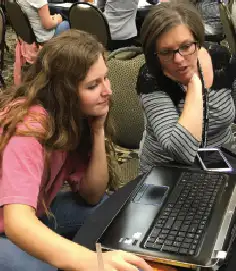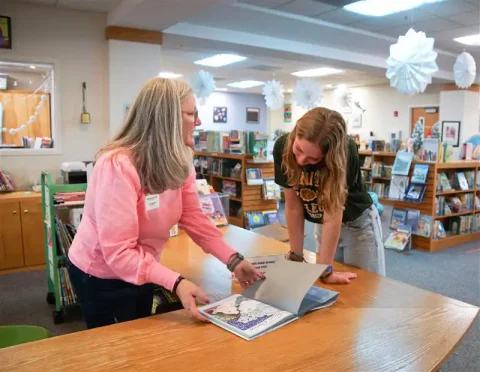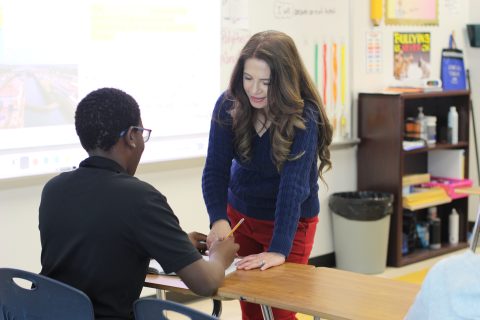Updated by Walsworth Yearbooks 4/28/2025
Finding your theme can be a daunting task. It sets the tone for your school year as a staff and influences every aspect of your yearbook production. With that, there’s a lot of pressure to find the perfect theme.
But it doesn’t have to be so daunting. Let’s discuss how to develop a theme in stages.
Stage One: Atmosphere
The yearbook is an important part of the school’s history. Prior to discussing the theme, it’s important to first understand the functions of a yearbook and what makes one so important. Look at previous volumes of yearbooks from your school and consider the things that make that book unique to its time in history.
To get a better understanding of what a strong yearbook does well, take a look at some of the resources available on our site.
- Theme Gallery
- Possibilities
- “Finding Your Theme” unit, Walsworth Yearbook Suite
- President’s Collection Series
Discuss the aspects of the books you reviewed that you liked or disliked. Some good questions to consider are:
- What do you see on the cover that makes the book inviting?
- What do you see on the spine?
- What items appear on or in every book we are looking at?
Additionally, discuss what type of words or phrases are represented. What do the covers evoke?
- Is it a school-spirited theme (proud, loud)?
- Is it a traditional theme?
- Is the theme quirky, fun and a bit crazy?
- Would the average student understand what the book was about?
- Should there be pictures on the cover? Wild type? Crazy graphics?
- Is the theme bold? Sophisticated and classy?
- Does the font represent this feeling?
- Are the graphics sophisticated and modern?
Stage Two: Inspiration and Bonding
Now that we have established what makes a yearbook strong, let’s start looking at what makes a theme strong. Pair up with a classmate and choose a yearbook to look through. Take a look at the endsheets and the first several pages, as well as the fonts, colors and graphics used. Consider whether the cover and opening spreads set a tone for the rest of the book.
- Do the graphics work?
- What information is supplied on endsheets?
- Is the structure of the book easy to understand?
- What information is on page one?
- Is the theme copy interesting to read?
- Is the theme copy helping the reader understand the book?
- Does the theme copy set a tone for what the reader will see inside the book?
- Does the photography set the tone of the theme?
Stage Three: Examples
Now it’s time to expand our horizons and look elsewhere for good examples. Take a look at advertisements from magazines, book covers and examples found on the internet that could represent a good theme. As you look for ideas, keep an eye out for the following:
- Verbiage in ads and even headlines that get your attention
- Photography that helps readers relate
- Taglines and short, precise ad copy
- Trending colors and fonts
Once everyone has their examples, hang them all on a wall in your classroom. Take a look at all the ideas shared by your classmates, making a mental note of what works and what doesn’t. If time allows, each staff member can share what caught their eye in each of their examples.
Stage Four: Group Project
Now that we have collected inspiration, it’s time to put it all together. It’s time for an end of year group project. This project encompasses everything your staff has discussed about the theme thus far. The staff will be split up into groups of 4-5, with a mix of new and experienced staffers. Each group will need to put together a tri fold board or slide deck with each of the following assets:
- Create a theme based on what you think the next year’s book should be
- Create a logo or brand of the theme phrase
- A list of fonts used, colors chosen and types of graphics
- Mock-up of the cover complete with a spine design
- Remember to include all necessary information
- Mock-up of the endsheets
- Mock-up of the theme pages with fonts, colors and graphics
- Theme copy for the opening spread
During the weeks spent working on the project, graduating editors will teach lessons on branding, marketing, computer use and design. This keeps the soon-to-be graduates focused and allows them to pass down the skills they’ve acquired in the class. Walsworth has ample resources to help teach these lessons.
Stage Five: Time to Present
On presentation day, each team should think of itself as an advertising agency. They need to understand that the “pitch” is what sells the ideas. Teams should practice presentations, act and even dress professionally, and come prepared. (Again, assigning a grade may do the trick.)
You may have a clear theme winner from these presentations, or you may not. There could be division among your troops. Do not worry. Take your thoughts and presentations with you to camp. I strongly suggest not deciding on the final theme until after you, your EICs and staff attend a Walsworth summer workshop.
Stage Six: Summer Opportunities
Camp will provide more direction from talented trainers, advisers, other staffs and your sales representative. Bottom line, going to camp with some sort of direction will be beneficial. It will allow the group time to reflect and even make adjustments to the theme.
While at camp, there will be access to professional cover artists. Or, you can allow a talented student to create a cover.
To find more information on camps near you, speak to your sales rep or access Walsworth’s Workshop Central.
Stage Seven: It’s ALIVE
Once summer camp is completed, the staff can contemplate the book’s direction. At this point, everyone should be focused on the current edition of the yearbook. And as classes resume in the fall, the staff can begin carrying out the new direction.
Finally, as the adviser, you may also want to think about having your EICs attend one of the Walsworth Elite Weekends held every fall around the country. At an Elite Weekend, your staff will work with experts who will provide feedback and direction so that the 2026 volume can be the best book ever produced at your school. Ask your sales rep for information concerning the Walsworth Elite Weekends and local summer camps. You will be so glad your staff attended.
Yes, this seems like a lot of preparation for a simple theme. Correct. And yes, it seems like it does not happen overnight. Correct again. This theme thing is really the backbone to the publication you and your students are creating.
Bottom line: Don’t rush. Let voices be heard. Let students think and imagine. You and the staff will create the best yearbook ever for this next school year and beyond.





